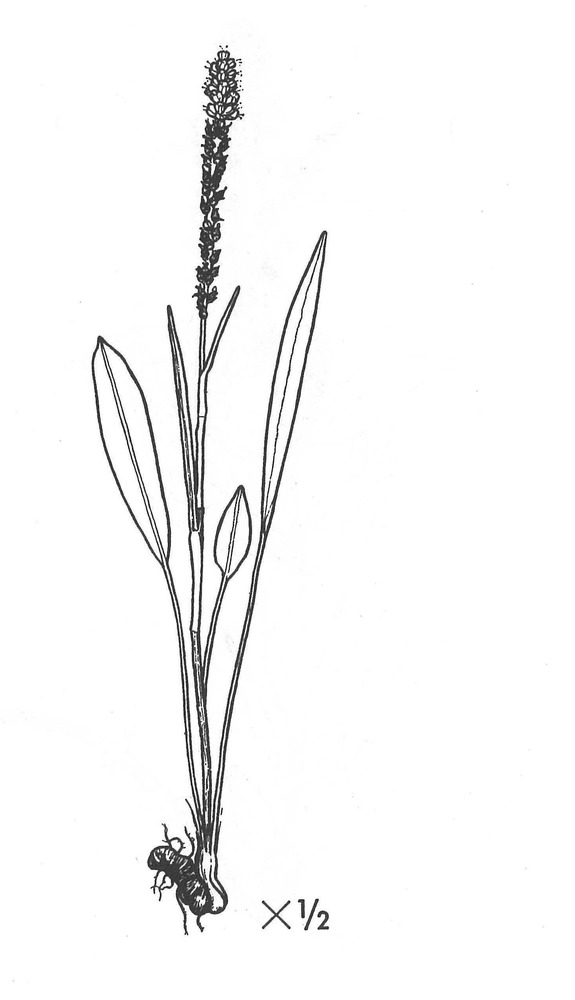| Polygonum viviparum L. | |||
| |||
| Family | Polygonaceae — APG family: Polygonaceae | ||
| Synonyms | Bistorta vivipara (L.) S. F. Gray. | ||
| Description | Rhizome thick, hard, usually contorted; radical leaves lanceolate, lance-oblong or linear, lustrous above graylsh below, glabrous spike with lower flowers replaced by bulblets sometimes growing out to small plants; calyx of upper flowers 5-parted, white or pink. | ||
| Ecology | Dry meadows, heaths, in the Yukon to at least 2,200 meters. Described from Europe. | ||
| Taxonomy notes | Highly variable within area of interest. Inland specimens are tall, with long, petiolated basal leaves, linear stem leaves, and long, narrow spike (P. fugax Small; Bistorta ophioglossa Greene). A gigantic plant, with large leaves, compact spike, and long-persistent bulblets, is var. Macounii (Small) Hult. (P. Macounii Small, Bistorta Macounii Greene; B. littoralis Greene). | ||
| Uses | The rhizome is collected in early spring and eaten raw by the natives of Siberia. It is said to taste like almonds. |
This is a digital representation of Eric Hultén’s ‘Flora of Alaska and Neighboring Territories: A Manual of the Vascular Plants’, which was published by Stanford University Press in 1968. The book was digitized by C. Webb (at UAMN) as part of the Flora of Alaska project, with funding by the US NSF (Grant 1759964 to Ickert-Bond & Webb), and with permission of Stanford University Press. Data and images © 1968 Board of Trustees of the Leland Stanford Jr. Univ. Usage licence: Creative Commons BY-NC-SA 4.0. NB: You may find OCR errors; please refer to the hard-copy if in doubt.
